|
|
 |
|
|
|
 |
Beyond the Labyrinth
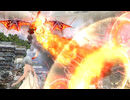
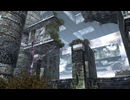

The absolute highlight of my gaming year 2015 was Beyond the Labyrinth, a game from tri-Ace that few in the west ever had the chance to play. In many ways, it's also the opposite of what I usually expect from that developer. Its story was simple enough: escort a girl all the way through ten zones full of monsters, and out of the labyrinth. Its combat was just as simple: a color-themed version of Rock Paper Scissors. From that, tri-Ace managed to create a compelling story with four faceless heroes, one girl who loves to talk (but can't hear the heroes' replies), one villain who doesn't show up till the very end, and exactly zero NPCs, while presenting the player with a battle system that was filled with ways to manipulate its deceptively simple battles.
This is all before we even speak of the game's graphics, which despite being for a very early-gen 3DS title still surpass most games for the system. Beyond the Labyrinth is simply a beautiful game with a wonderful soundtrack, and the fact that it never got a release is a crying shame. The 3DS RPG library was so sparse at the beginning that it should have been a shoe-in for localization. Seriously, Konami and/or tri-Ace. Who dropped the ball here? - Michael Baker
|
|
 |
Child of Light
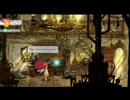
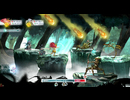

In one of its few surprising moves of the last few years, Ubisoft published this wonderful little RPG in 2014. It's the tale of a princess who is transported to a magical realm in need of saving. She'll need courage, wit, and compassion to overcome the trials in her way, and in the process she will mature into a beautiful and capable young woman.
With a combat system inspired by Grandia, a mezmerizing soundtrack by French Canadian artist Cœur de pirate, and a lush, hand-drawn 2D world, Child of Light is a delight both technically and artistically. Its text, which is entirely written in rhyme, falters a bit and can get in the way of characterization, but it was a neat idea. It's wonderful to see developers get a chance to step away from the AAA grind and let their imaginations soar, and I hope Ubisoft funds more projects like this in the future. - Becky Cunningham
|
|
tr>
 |
Crusader of Centy



Like many a young college student, I experimented a lot while at university. In my case, that meant trying new game systems and styles that I'd never had access to before. Pretty much every Sega Genesis RPG I ever played, I came across during that period. Only one of them stuck enough in my memory that I can even remember the name, and that was Crusader of Centy. It was a cute, funny little action RPG, much like a Zelda or a Rocket Slime in many ways, but in others it was definitely its own animal. It also came with its own menagerie, as the hero made do with his stable of animal friends rather than the usual dungeoneering tools. A speedy cheetah added his fleetness to the hero's feet, for example, and a water-loving armadillo provided stepping stones over water. Many animals added effects to the hero's special sword attack, with interesting effects arising from different combinations.
The story itself was pretty odd, as it started with a simple narrative of man-vs.-monster, then took a hard right turn when a magician removed the hero's ability to speak with humans entirely, while blessing him with animal speech. Much later there was the time vortex, and several plot points that had one feeling bad for the monsters, or at least angry at the humans of past times. There was one in particular where if the player didn't feel bad at himself afterwards, then well... The plot ended with the hero finding a way to permanently prevent the human-monster conflict without resorting to xenocide, and the final set of five bosses stand out in my memory as being one of the funnier set of theme enemies I've seen. I've played many games since then. Better games, worse games, stranger games, duller games. The fact that I can remember specific details and boss battles from one playthrough, fifteen years later, says a lot in its favor. - Michael Baker
|
|
 |
Folklore



Released during the height of "PS3 has no games" sentimentality, Folklore's release was buried under the pile of a far too many good games in late 2007. Still, it serves as a fun and beautiful action RPG that's more interesting than it is great. Folklore follows a young woman named Ellen and a man named Keats as they travel to the island of Doolin and get embroiled in a murder mystery that can only be solved by traveling to the Netherworld, a Celtic otherworld filled with faeries and folk.
The game is visual spectacle, filled with color and fantastic creature design drawn from the relatively underused source of Celtic folklore. Combat remains fresh throughout, taking advantage of the different folk available to mix up even basic attacks. The level design is lacking but their variety more than makes up for it. And the solution to boss fights and enemy weaknesses being represented by drawings hidden away in pages of a storybook fits the theme incredibly well. Folklore can also lay claim to the best use of the ill-conceived Sixaxis controller, gently shaking or rotating it to pull the exposed souls of folk away from their bodies.
The game is a short experience, barely clocking over ten hours, but its brevity assures the game doesn't overstay its welcome. Some of the presentation and story elements leave a bit to be desired, particularly long segments of the cutscenes having no voice acting, but its more charming elements definitely make up for it. It's an idea that with a few fixes could make for a great sequel, but the game's performance is almost a guarantee that one will never happen. Still, it's a unique, underappreciated gem from the dying days of Japan's console RPGs. - Zack Webster
|
|
 |
Infinite Space


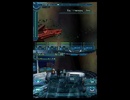
Science fiction and RPGs are not the most common melding, but it happens enough not to raise many eyebrows. What Infinite Space does differently than any other sci-fi RPG I can think of is to center events in space, rather than on a few planets. Things happen on the many planets visited, to be sure. The main action takes place in celestial terms though, with starships traveling to and fro on matters of intergalactic import.
The lack of planetary involvement is not the game's best aspect, since it means all worlds visited consist of a few static screens with options to select and lots of text. Perhaps if the game had been given a bigger budget, the places it depicts would have gotten more than a sampling of static backgrounds. Considering the number of locations it takes in, that may have involved more money and time than any business would be willing to fork over. Even if not much is seen of the many worlds in Infinite Space, there are plenty to see. Scale is one thing this game manages to convey quite well, as its narrative takes in a large chunk of time and space. The tale of Yuri's space exploration and eventual conflict against mysterious forces feels close to a sci-fi novel in some ways, especially in the turn it takes at the climax.
Scale is also used quite well in combat. There are some melee encounters, but most of the time Infinite Space depicts starships battling each other instead. By the end Yuri will have a squadron of five ships doing battle simultaneously against enemy vessels, and those ships will be built through one of the most addictive development methods around. New ship blueprints are acquired as the game continues, and inside each blueprint is room to manually fit a variety of parts that enhance the vessel's survivability. Doing this for every ship is time-consuming, but remarkably engrossing. Of course, Sega made the business decision to release Infinite Space mere days after Final Fantasy XIII, which explains why the game saw few sales. It did something different in the sci-fi RPG realm that still deserves to be experienced though. - Mike Moehnke
|
|
RPGamer's Favourite One Shots
Intro - 1 - 2 - 3 - 4
|









